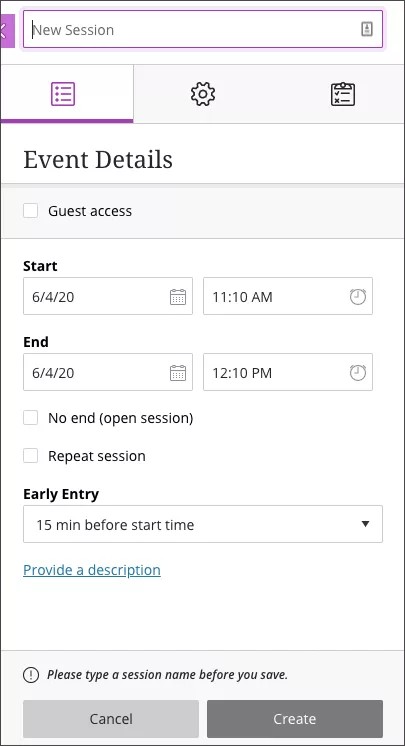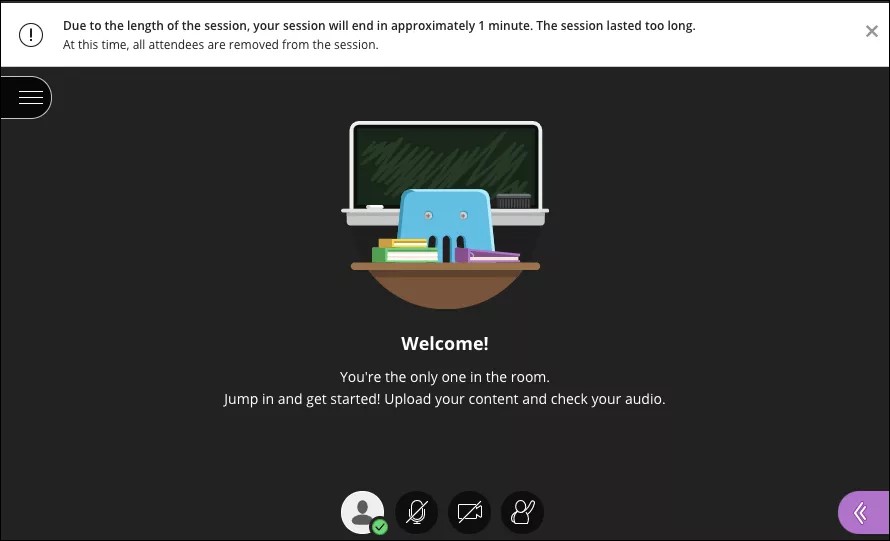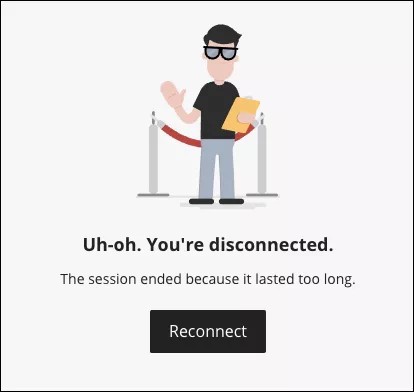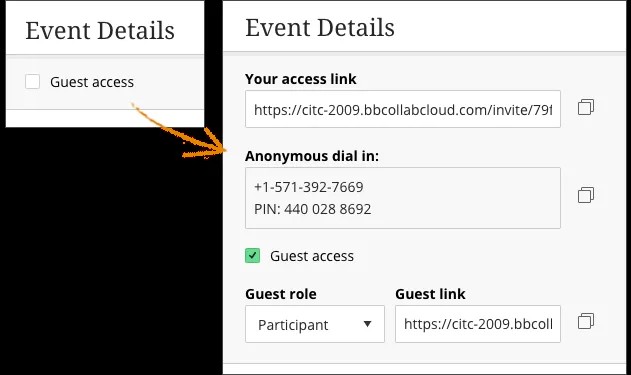From the Scheduler sessions list, select Create Session. The Create session panel is organized by tabs.
The tabs you see depend on if you create sessions from inside your course or not. Only event details are required to create the session. The other tabs are optional.
- Event details: Basic information required for a session. More on Event Details.
-
Invitations: Optionally, send email invitations to specific attendees. More on Invitations.
This feature is only available from the Scheduler web page. You can't send invitations from inside LMS courses.
- Session Settings: Optionally, decide if users can download recordings, share audio or video, post chat messages, and more. More on Session Settings.
-
Attendance Reporting: Optionally, share session attendance data to your Blackboard Learn course. More on Attendance Reporting.
This feature is only available in Blackboard Learn.
Event Details
Event details include the name, date, and time of a session. Decide if the session is open ended or recurring.
Sessions that last longer than 12 hours are disconnected. Recordings also limited to 8 hours.
Make the name something meaningful for your attendees so they know what the session is for.
Collaborate uses your computer’s local time zone for session start and end times.
You can also allow guest access from the Event Details tab.
Edit recurring sessions
Recurring sessions are based on the first session in the series. To change the time of the whole series, make the update in the first occurrence. You can also update individual occurrences.
- From the Scheduler find the recurring session.
- Expand the session to see all occurrences.
- Select the Session options menu and select Edit occurrence.
- Edit the occurrence and save.
Sessions that run for very long are automatically disconnected
By default, sessions that last longer than 12 hours are disconnected. While sessions can be scheduled for any length of time including no end date, it's unusual that anyone stays in the session for more than 12 hours at a time. We assume it is unintended and disconnect the room. Attendees can rejoin the session, if they need.
Guest access
Guests are attendees who don't need to sign into the session or be enrolled in your course to join the session. Guests don't require authentication.
When you allow guest access, a guest link is available for the session. This link is a public link that can be used and shared by anyone who has it. Anyone with the guest link can join the session.
Guest access is off by default to limit access to authenticated attendees. If you want to keep your session secure, don't use guest links.
After you allow guest access, choose a role for your guests based on the permissions you want to give them. Make sure you understand the different roles and their permissions before assigning them to guests.
If you allow attendees to teleconference into your session, anonymous dial-in information is also available. As with guest links, anybody who has the dial-in information can use it. You also won't know who the attendee is as they'll be anonymous. If you want to keep your session secure, don't share the anonymous dial-in information. Attendees can still teleconference but with dial-in information that authenticates them.
More on Collaborate teleconference
Remove guest access
If you allow guest access and change your mind later, clear the Guest access check box in the session's Event Details tab. Any guest links that were previously shared will no longer work. The session is still active but the guest link is broken. Attendees will need to join from your course or email invitation.









